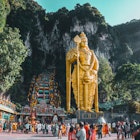Technology has allowed cameras to become increasingly easy to use – no one with a smartphone has an excuse for missing that perfect moment. But to make the most of those great experiences, getting the shot is only half the battle.
That’s where photo editing comes in. Thoughtful post-processing – whether it’s just a few tweaks of an Instagram slider or an artful assortment of Photoshop tricks – should be a part of every type of photographer’s toolkit. Use these tips to help get you started.

Hit me with your best shots
Digging through hundreds of images after a big trip can be a daunting task. Trust your instincts and taste. Pick a comfortable system to mark your favorite photos, whether it’s a ‘heart’ on your iPhone or by adding favorites to a custom folder. Take as many passes through your photos as needed, each time narrowing down your selections until you’ve chosen a series that tells the most compelling story. The same concept applies if you’ve moved over to your computer with a program like Adobe Lightroom or Adobe Bridge. Critically analyzing your photos in this way is great practice and essential to honing your taste and unique style.

Getting familiar with basic mobile editing tools
For many budding travel photogs, all the tools necessary for some great-looking images are right at your fingertips. The world of smartphone apps – including Snapseed, VSCO, and even Instagram – makes it easy to make standard adjustments. Start with some goals. Maybe you want to bring out a certain subject or focal point. Maybe you want to make the colors pop out a bit more, or bring things more into balance. Perhaps there are details you know were there in real life that just aren’t apparent in your photo.
Start by focusing on the basics. Straighten the image and then make any corrections to the white balance. Calibrating ‘white balance’ (also referred to as ‘temperature’ in Instagram, for example) helps ensure that your overall image is not too 'warm' (heavy on red, orange, and yellow) or too 'cool' (leaning toward blue, green, and purple). Most people set their cameras to ‘auto white balance’, which can be quite accurate but still usually needs tweaked in post production. Whatever program you’re using, you’ll quickly find that sliding the balance one way or the other makes a big difference.
Next, adjust the overall exposure so the key subjects are bright enough. Make sure that majestic mountaintop shines or those ocean waves glisten. But be careful not to blow out the highlights. At this point, you might notice some deep shadows. So use the shadow slider, available in most mobile editing apps, to brighten large portions of the photo revealing important detail previously lost in darkness. Lastly, add a little sharpening so contours are clear and crisp.
Put your pics on full effect
Of course, apps give you plenty of ways to go over the top. Like any artistic technique, editing is highly subjective and it’s completely up to you how far you want to take it. Go black and white. Apply your favorite Instagram filter. Or ‘crush the blacks’ for a moody vibe by decreasing the contrast and slightly lightening the shadows to a faded, matte finish (Instagram’s ‘Aden’ filter is a quick way to achieve this effect). Be wary of over-processing and risk losing the original essence of your photo. Most of your savvier followers will be able to spot a harsh Hefe filter at a glance, but feel free to experiment with your own custom settings to achieve a unique effect that works best for you. Eventually, you’ll develop your own style and find an aesthetic that resonates with you and your audience.

Raw power
Smartphones are great, but their processing capabilities still fall short of a decent DSLR or mirrorless camera. Because their larger image sensor collects much more light, the image quality and potential for greater dynamic range is improved significantly. Save your photos in ‘raw’ file format to take full advantage. When a photo is captured as a ‘jpeg’ (like on a mobile device), it is automatically processed to an extent – adjustments can quickly degrade the image quality.
Raw files contains a great deal more information, including a wide range of exposure values, color tones, and sharpening qualities. Because this format is essentially unprocessed, you get to decide how much dynamic range (the varying amounts of highlights, midtones, and shadows) you want your photo to contain. This freedom allows your processing software to make dramatic adjustments without sacrificing quality.

Processing raw images requires a bit more horsepower, so most of the associated programs are made for the desktop or laptop computer. Start with Adobe Lightroom, Adobe Camera Raw, and Capture One. Camera Raw is probably the most entry-level solution, while Lightroom has become the industry standard for its high quality and wide range of presets. Companies like VSCO sell these presets, which often have a distinct, vintage film aesthetic popular with portrait and wedding photography. Capture One, although not as widely used as Lightroom, is said to be even more powerful in its conversion process and is the go-to program for many studio photographers that still shoot medium format.
Not only do these programs allow you to make standard adjustments, but they also let you batch edit a large number of photos at once, significantly improving your workflow. For example, if you have a series of 20 landscape shots with similar lighting conditions, you can easily make the necessary adjustments to one of the images and then simply copy and paste those settings to the other 19. This streamlined approach is particularly useful for photo shoots that need high quality refinements made relatively quickly.

All the bells and whistles: Photoshop
If you want to have absolute control over your imagery – stitch multiple images together, distort figures into caricatures, create animations – industry standard-bearer Adobe Photoshop is the program for you. Photoshop is ideal for pinpointing specific areas that need custom correction when you really want to polish that photo. It also boasts a wide array of special effects filters such as motion blurs, lens flares, and the controversial ‘liquify’ function for sneaky touch-ups.
Content-aware fill, healing brush, and clone stamp tools work like magic, allowing you to move or remove objects and instantly fill in the places they once were. Meanwhile, the program’s ability to perfectly isolate and mask an object allows you to remove the background and insert another, or transport a subject into a new setting.
With Photoshop, though, always remember that it’s easy to get started on any of these effects, but it can take years to master any of them. Sloppy Photoshop edits are never a good look. In any case, whether you're looking to put some gloss on your last round of vacation pics or get heavily involved in professional-looking prints, the solution is out there for you.











